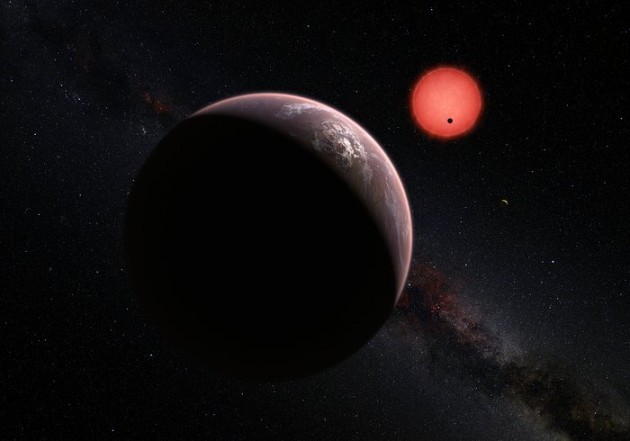Scientists have discovered not one, not two, but three potentially habitable planets, according to a paper published in Nature on Monday. These Earth-sized planets are apparently orbiting a star known as TRAPPIST-1, a dim, cool star about the size of Jupiter, and scientists say it could be the best place to look for exoplanets we’ve ever seen.
At a distance of about 40-light-years away in the constellation Aquarius, researchers say these Earth-like planets may have the right conditions for life, and because its host star is relatively mellow, they’re easier to gaze upon with telescopes.
Now, just because these planets rest in the Goldilocks Zone doesn’t mean they are in fact habitable, though the evidence is certainly in favor of that theory. Scientists say their next goal is to study the atmospheres of these planets and to determine whether or not they’re the real deal.
“With such short orbital periods, the planets are between 20 and 100 times closer to their star than the Earth to the Sun,” explained Michaël Gillon, lead author of the paper. “The structure of this planetary system is much more similar in scale to the system of Jupiter’s moons than to that of the Solar System.”
Exoplanets are observed by detecting when planets transit between their sun and telescopes here on Earth. When a dip occurs, it’s a telltale sign that something large is orbiting a planet; the intensity and number of dips then allows astronomers to figure out a planet’s size.
Unfortunately, two of the three recently discovered planets might get too much radiation because of their proximity to their parent star. However, scientists believe these planets might be tidally locked, with the potential for water to pool on the dark sides. The third planet might be the best candidate, lying somewhere at the edge of the habitable zone, making it the right temperature for liquid water to exist.
The planets are too far away to travel to, which means studying them up close is out of the question. Luckily, telescopes are already being built that will allow researchers to study these planets in unprecedented detail, hopefully answering once and for all if there really is life out in the cosmos.
















